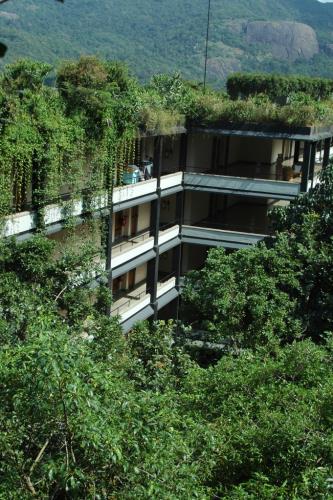Yap loves design, travel and everything beautiful in life. He writes for various media about travel and design and has published works, including Wander Bhutan and Myanmar Odyssey. Formerly publisher of Lonely Planet (China Office), Yap is now Chief Content Officer of Youpu Apps, a Beijing based travel app company.

What’s the difference between tradition and modern? How to divide the line between foreign and local? Colonised by Portugal, the Netherlands and the United Kingdom for approximately 450 years, Sri Lanka has had enough intake of foreign elements to develop its own character, and the blend of different cultures has given birth to something brand new and beautiful. I was wandering in Paradise Road, a prominent retail outlet in Sri Lanka. I couldn’t help buying a basket of homewares. The beautiful crockery has the signature black and white lines on it. Most of the items are handmade by artisans in Sri Lanka, and the pattern and design are matchable with a modern kitchen. Tormented by civil wars and tsunamis, this island country surrounded by the Indian Ocean actually has pioneered some excellent designs. The founder of Paradise Road, Shanth Fernando, is himself a designer. His two daughters also followed the same career path and the Fernando family is a prominent family of designers in Sri Lanka.
Fernando is a forward-looking man. More than twenty years ago he founded the fashionable Paradise Road The Gallery Café, a famous coffee shop and accessory shop combo in Colombo. It’s located in the former office of Geoffrey Bawa (1919-2003), the most renowned designer in Sri Lanka. This comfortable space showcases Bawa’s idea of creativity. At the entrance there are several enchanting plumeria trees. Before you enter the coffee shop, there is a long, narrow courtyard and a rectangular pool with loaches and water lilies. A serene and tranquil ambiance is naturally formed. Bawa’s forte is to break through the dividing line between indoor and outdoor. Outdoor landscape is introduced into indoor space in his design, which allows people to enjoy the natural surroundings at any time.
Bawa’s design also showcases the perfect fusion of the east and the west. The designer was born into an aristocratic family in 1919, during which Sri Lanka was still one of the colonies of the United Kingdom. When Bawa was small, he received an aristocratic education founded in the British public school tradition. After which he studied English in Cambridge and read law thereafter. He started working as a lawyer when he returned to Colombo. But he didn’t like his profession. At the age of 38, Bawa had a career change and started practising as an architect. In the 1980s, Bawa’s style reached maturity and he had designed a number of provocative public buildings, including temples, resorts, university campus and parliament building. Buildings designed by him dotted all over Sri Lanka, India, Maldive and Japan. While tropical modernism is revered by architects in Southeast Asia, Bawa was one of the original proponents of this design movement. It is believed that all architecture firms in Singapore in the 1980s boasted at least a copy of a battered book devoted to his work.
I didn’t want to miss a chance to visit buildings designed by him when I was in Sri Lanka. Apart from Paradise Road The Gallery Café, the Kandalama Hotel located in the Sri Lanka’s Culture Triangle is a supreme example of Bawa’s philosophy of design. Sinhalese culture is ingenious infused into modern design, which breathes new life into tradition. The open-air lobby is low-ceilinged and narrow. Sound of rain and wind as well as sunlight can be heard and seen in the lobby with no limitations. Beside the lobby, a dimly lit, winding path leads to the main building of the hotel. The white curved walls of the passageway are polished up so as to absorb natural light from the outside. On the other side you will see the original, solid rock formation. The natural surroundings of the cave are preserved and the design allows each visitor to become an explorer.
The original rock formation preserved in the hotel is the most natural form of installation art. The architecture no longer only consists of straight lines, but is literally carved into the rock face. Bawa’s talent was to blur the lines between human creations and nature. When an architect works with the nature, he or she has to use resources from the nature, too. Bawa planted a lot of trees in and outside the hotel, hoping that the entire hotel could be engulfed by the power of the nature.
Creativity comes from a detailed observation and study of our surrounding environment, and an answer could be found out in this process. The natural landscape in Sri Lanka is the muse of designers, and Bawa’s style of design totally respects the originality of the site. He made good use of the rocky landscape and designed an infinity pool that can seamlessly blend with the ocean. Even if there are trees that are bizarrely shaped and block certain space, he didn’t cut them down. Instead he integrated them into the design. While Bawa’s design is simplistic in style, old stones and trees are often incorporated in his work and they are considered the most precious decorative details of his buildings.